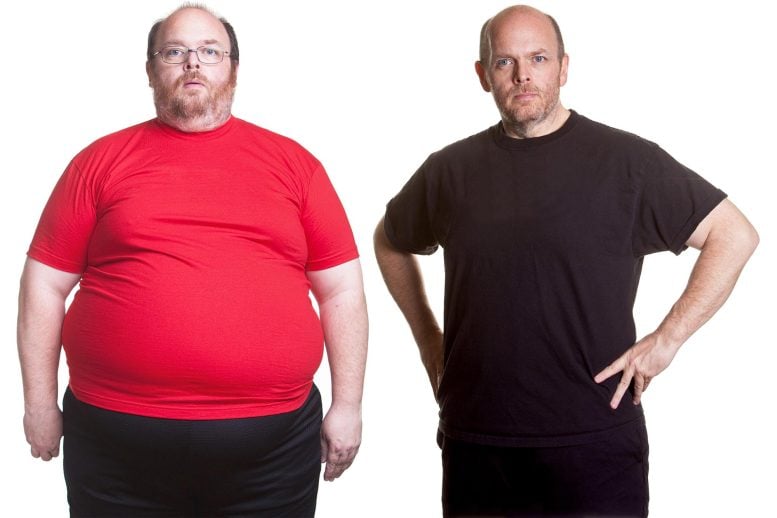
Scientists have unveiled the atomic structure of UCP1, a protein key to calorie burning in ‘good’ brown fat. This discovery, enabled by a cryogenic electron microscope, offers insights into potential weight loss treatments and methods for regulating body temperature via thermogenesis.
Findings represent the first structural details of uncoupling protein 1 (UCP1), which allows fat tissue to burn off calories as heat.
New research has unlocked insights into how “good fat” tissue could potentially be harnessed to combat obesity and remove glucose from the blood, helping to control diabetes. Published today in Science Advances, the work is a collaboration between researchers with the Perelman School of Medicine at the University of Pennsylvania and University of Cambridge, Free University of Brussels, and University of East Anglia.
Human bodies consist of two types of fat: brown and white. Brown fat breaks down blood sugar (glucose) and fat molecules, generating heat in response to cold temperatures helping to maintain normal body temperature. The majority of fat in humans is white fat, and building up too much white fat contributes to obesity and other health issues.
Using the Krios G3i, a cryogenic electron microscope at the Penn Singh Center for Nanotechnology researchers were able to view mitochondrial uncoupling protein 1 (UCP1)—a protein which allows fat tissue to burn off calories as heat—in atomic detail for the first time. This work uncovered new insights into how this protein’s activity in brown fat cells could potentially be harnessed for weight loss.
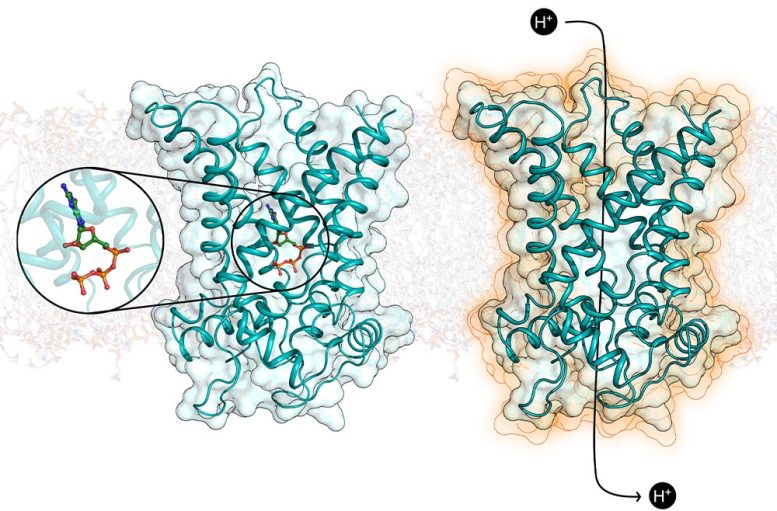
The human uncoupling protein in brown adipose tissue in its inactive form (left), inhibited by a nucleotide, and in its activated form (right), which short-circuits the mitochondrion to produce heat. Credit: Penn Medicine
“This is an exciting development that follows more than four decades of research into what UCP1 looks like and how it works,” said Vera Moiseenkova-Bell, PhD, a professor of Systems Pharmacology and Translational Therapeutics and faculty director of the Beckman Center for Cryo-Electron Microscopy. “These new indings would not have been possible without the collaboration between everyone involved.”
In mammals, UCP1 gives brown fat a specialized ability to burn calories as heat for maintaining a stable body temperature. When activated by fatty acids, UCP1 short-circuits the mitochondria—known as the powerhouse of the cell for its work releasing energy from food—by allowing protons to seep across mitochondrial inner membrane. The short-circuiting generates heat and allowing the body to regulate its temperature through a process called thermogenesis.
For more on this research, see The Breakthrough That Could Lead to New Obesity Treatments.
Reference: “Structural basis of purine nucleotide inhibition of human uncoupling protein 1” by Scott A. Jones, Prerana Gogoi, Jonathan J. Ruprecht, Martin S. King, Yang Lee, Thomas Zögg, Els Pardon, Deepak Chand, Stefan Steimle, Danielle M. Copeman, Camila A. Cotrim, Jan Steyaert, Paul G. Crichton, Vera Moiseenkova-Bell, Edmund R. S. Kunji, 31 May 2023, Science Advances.
DOI: 10.1126/sciadv.adh4251
This work was supported by the Medical Research Council (MC_UU_00028/2, MC_UU_00015/1), by the U.K. Biological and Biotechnological Sciences Research Council (BB/S00940X/1) and by National Institutes of Health/National Institute of General Medical Sciences (R01 GM073791, F31 HL156431). Nanobody discovery was funded by the Instruct-ERIC part of the European Strategy Forum on Research infrastructures, and the Research Foundation – Flanders, and the Strategic Research Program of the Vrije Universiteit Brussel.




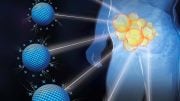
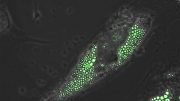
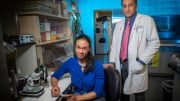

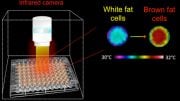
This is the same study scitechdaily published the press release for in “New Obesity Breakthrough: Protein Molecular Structure Discovery Could Unlock Fat Burning” last week. Only this is from the UoP, and it was the UofCambridge’s press release last time. It was a joint study, so now we get the Pennsylvanian perspective on it. So, it’s the same thing, only with extra cheese.
What a total waste of money, effort and time. It’s been known for over 100 years that the key to sustainable weight loss and type 2 diabetes ( prevention and ) reversal ( as well as that of many other chronic illnesses ) is readily and economically achievable with a 100% whole food plant based no oil diet. All that is needed is an acknowledgment of this and public health education of same. Clearly no one is interested in this research as there is no money to be made from it.